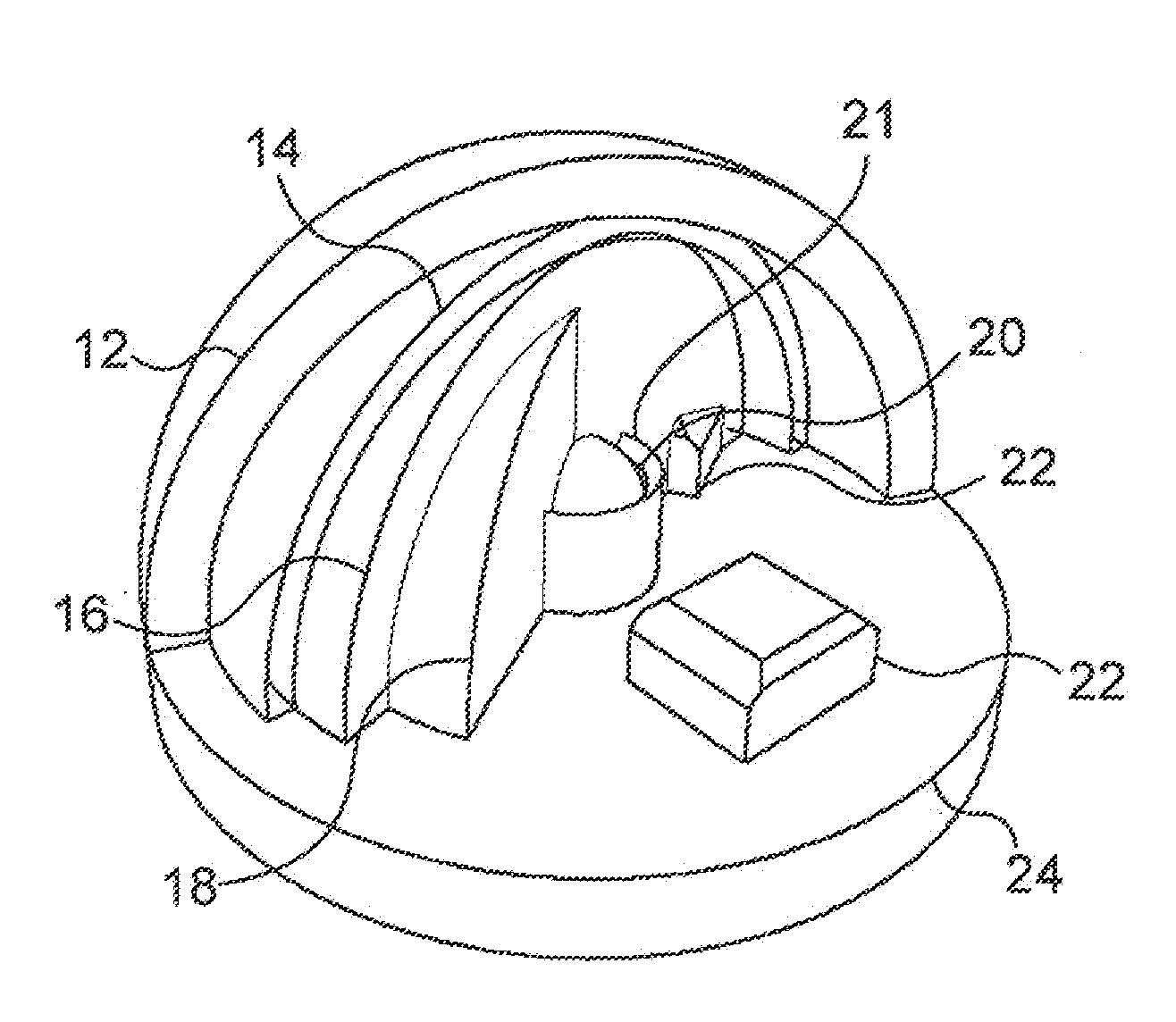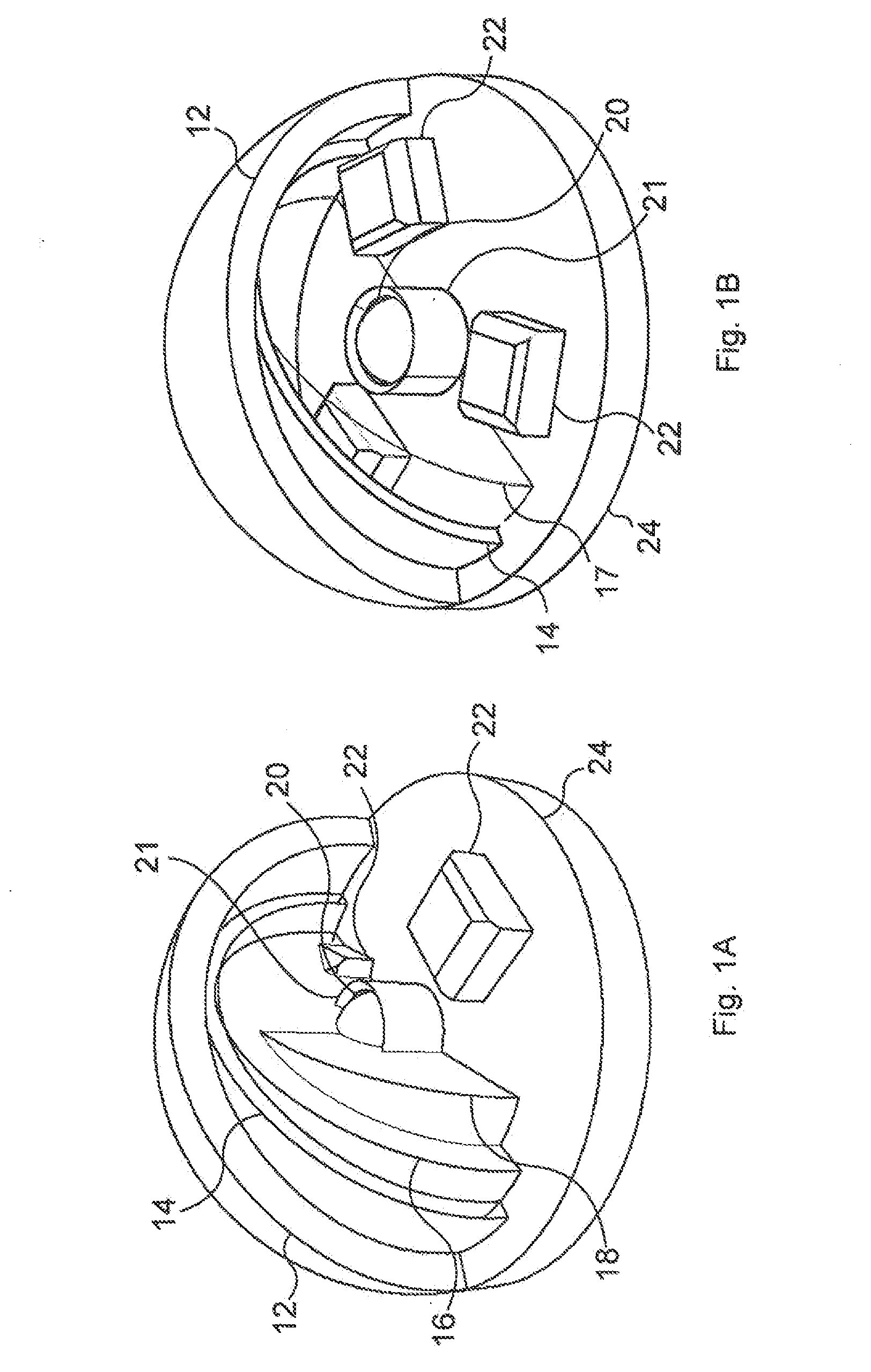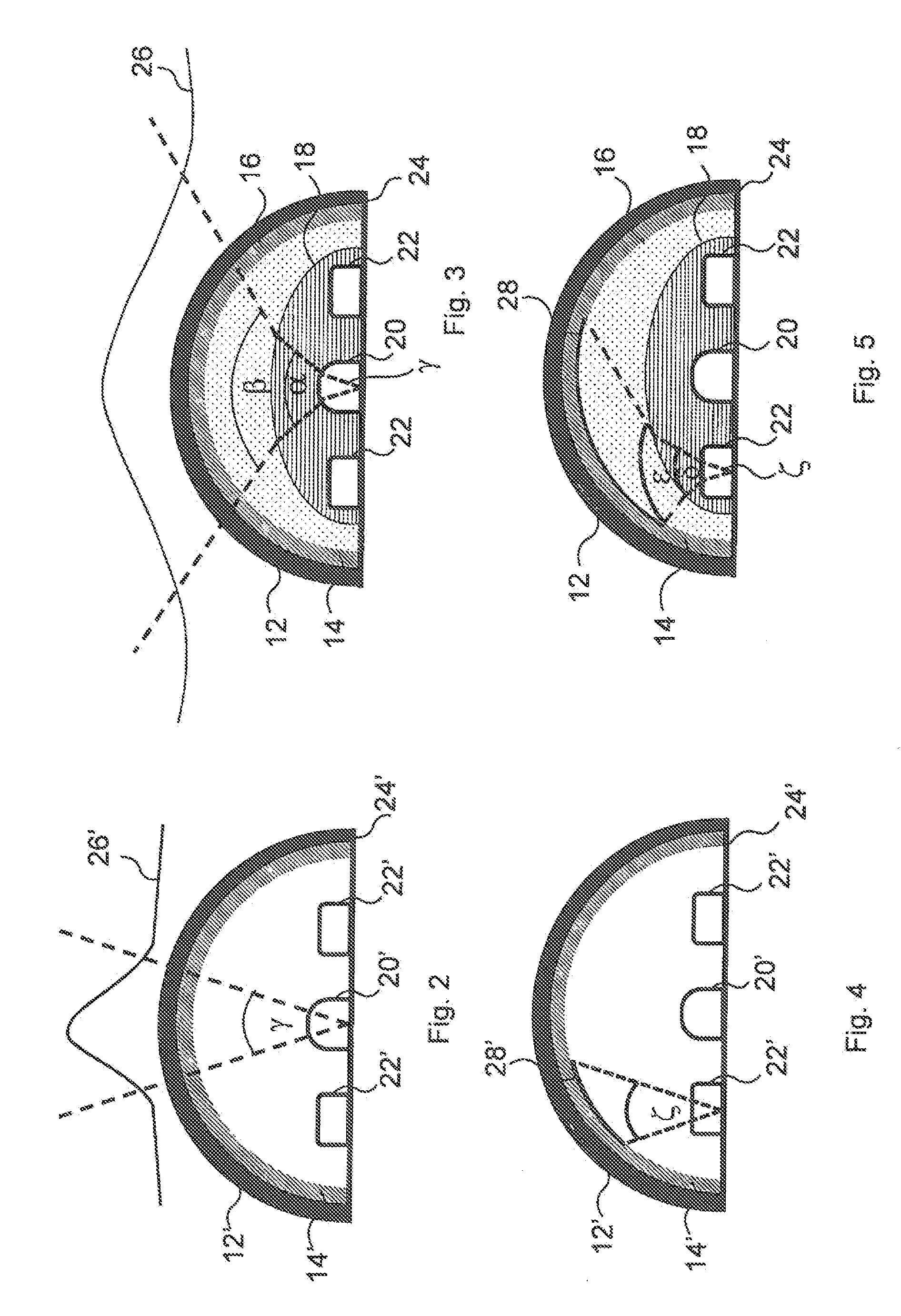Electrically Insulated Screen and Method of Erecting an Electrically Insulated Screen
a technology of electrical insulation and electrical insulation, applied in the field of sensor devices, can solve the problems of limited useful surface of the sensor device, reduced gripping stability, limited application range, etc., and achieve the effect of increasing the gripping stability
- Summary
- Abstract
- Description
- Claims
- Application Information
AI Technical Summary
Benefits of technology
Problems solved by technology
Method used
Image
Examples
Embodiment Construction
[0045]The sensor device according to the invention operates on the basis of optical principles. FIG. 1A shows the structural view of an embodiment of the sensor device according to the invention. For a better view, the depicted details of various layers of the sensor device are folded out. The sensor device according to the invention comprises a carrier element 24, at least one, in the present embodiment one, light emitting element 20 arranged on the carrier element 24, at least one, in this embodiment three, light detecting element 22 arranged on the carrier element 24, and a cover layer 12 reflecting at least one part of the light emitted by the light emitting element 20 to at least one light detecting element. The carrier element of the sensor device according to the invention has a flat configuration in some of the depicted embodiments. In some preferred embodiments of the sensor device according to the invention, the light emitting element 20 is capable of emitting infrared lig...
PUM
| Property | Measurement | Unit |
|---|---|---|
| transparent | aaaaa | aaaaa |
| flexible | aaaaa | aaaaa |
| shape | aaaaa | aaaaa |
Abstract
Description
Claims
Application Information
 Login to View More
Login to View More - R&D
- Intellectual Property
- Life Sciences
- Materials
- Tech Scout
- Unparalleled Data Quality
- Higher Quality Content
- 60% Fewer Hallucinations
Browse by: Latest US Patents, China's latest patents, Technical Efficacy Thesaurus, Application Domain, Technology Topic, Popular Technical Reports.
© 2025 PatSnap. All rights reserved.Legal|Privacy policy|Modern Slavery Act Transparency Statement|Sitemap|About US| Contact US: help@patsnap.com



